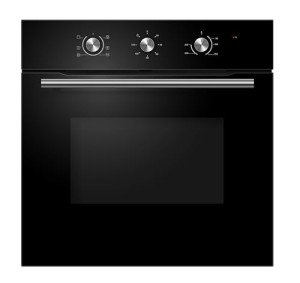The Rise of Integrated Cookers and Hobs: A Comprehensive Guide
In the modern-day kitchen, effectiveness, style, and space optimization are key considerations for homeowners and striving chefs alike. Among the most significant patterns in kitchen style is the increasing appeal of integrated cookers and hobs. built in oven and induction hob package improve the cooking experience however likewise elevate the aesthetic appeals of the kitchen area. This article explores the characteristics, advantages, features, and factors to consider surrounding integrated cookers and hobs, providing readers with an in-depth understanding of their advantages.
What Are Integrated Cookers and Hobs?
Integrated cookers and hobs describe cooking appliances that are built into the kitchen cabinetry, providing a smooth appearance and making the most of using space. Integrated appliances are developed to blend with the aesthetic of the kitchen rather than sticking out like traditional models.
Types of Integrated Cookers and Hobs
Usually, integrated cooking appliances consist of:
- Integrated Hobs: These are cooktops that fit flush into the kitchen countertop. They can be gas, electric, induction, or a combination of these technologies.
- Integrated Ovens: Built straight into the kitchen cabinetry, integrated ovens can come as single, double, or multifunctional models, offering varied cooking abilities.
- Combination Units: Some designs combine an oven and hob into a single appliance, using a compact option for smaller kitchen areas.
Benefits of Integrated Cookers and Hobs
1. Area Optimization
Integrated cookers and hobs are perfect for little kitchen areas. By embedding the cooking appliances into cabinets, house owners can utilize their kitchen area more efficiently, leaving more space for meal preparation and movement.
2. Visual Appeal
These appliances provide a smooth and modern look to the kitchen. The capability to select surfaces and integrate them into the surrounding kitchen cabinetry develops a unified design that enhances the overall look of the kitchen.
3. Improved Functionality
Integrated cookers and hobs frequently come with advanced innovation functions, such as wise controls, timers, and cooking presets, improving user experience and allowing effective cooking.
4. Improved Safety
Lots of integrated hobs include precaution such as child locks and automatic shut-off functions. This makes them more secure than conventional freestanding designs, especially in homes with kids.
5. Increased Resale Value
Modern homes with integrated appliances frequently attract greater resale values. Potential buyers look for streamlined designs and modern-day benefits, making integrated cooks and hobs a wise investment.
Features to Consider When Choosing Integrated Cookers and Hobs
When selecting integrated cookers and hobs, numerous functions should be considered:
1. Cooking Technology
- Induction: Provides quick and effective cooking, simple to tidy, and provides precise temperature control.
- Gas: Offers traditional cooking benefits with instantaneous heat but needs adequate ventilation.
- Electric: Provides consistent heat and is available in numerous styles.
2. Size and Configuration
- Oven Capacity: Should suffice for the family's cooking requirements.
- Hob Size: Depending on the number of burners/vessels needed for synchronised cooking.
3. Control Mechanisms
- Touch Controls: Provide a streamlined look and ease of cleansing.
- Knob Controls: Offer tactile feedback and are user-friendly.
4. End up and Style
Integrated cookers and hobs can be found in different surfaces, including stainless steel, black glass, and even customizable options to match kitchen cabinetry.
5. Energy Efficiency
Decide for energy-efficient designs that can conserve on energy expenses and lower environmental effect.
Maintenance and Care
To keep the efficiency and durability of integrated cookers and hobs, routine maintenance is key:
- Clean the surfaces: Regularly clean down the hob and oven surface areas to avoid residue build-up.
- Inspect seals and gaskets: Ensure that oven seals are intact for effective cooking.
- Service frequently: Schedule expert maintenance to keep the appliances in top shape.
Frequently asked questions
1. What is the difference between built-in and integrated cookers?
Answer: Built-in cookers are designed to be set up within kitchen cabinetry, whereas integrated cookers are developed to flawlessly mix with the cabinets for a more cohesive look.
2. Are integrated appliances more expensive?
Answer: Generally, integrated appliances might have a greater in advance cost compared to freestanding units because of their design and the installation requirements. Nevertheless, they can offer long-term cost savings in energy performance.
3. Can I install integrated cookers and hobs myself?
Response: While some house owners may be able to handle the installation themselves, working with a professional is recommended to make sure proper fit and function, particularly for gas appliances.
4. Are integrated cookers and hobs much easier to clean?
Answer: Integrated hobs normally have fewer crevices, making them simpler to clean. Nevertheless, the specific cleansing requirements will depend on the materials utilized in the device.
5. What should I check before buying?
Answer: Check the size of your kitchen space, cooking requirements, energy effectiveness ratings, and compatibility with existing kitchen cabinetry.
Integrated cookers and hobs are ending up being progressively preferred in contemporary cooking areas, integrating functionality with visual appeal. By comprehending their advantages, functions, and upkeep requirements, house owners can make educated decisions when selecting the right appliances for their cooking areas. As patterns in kitchen style continue to progress, integrated cooking solutions will likely stay at the forefront of home development, promising both functionality and design.

